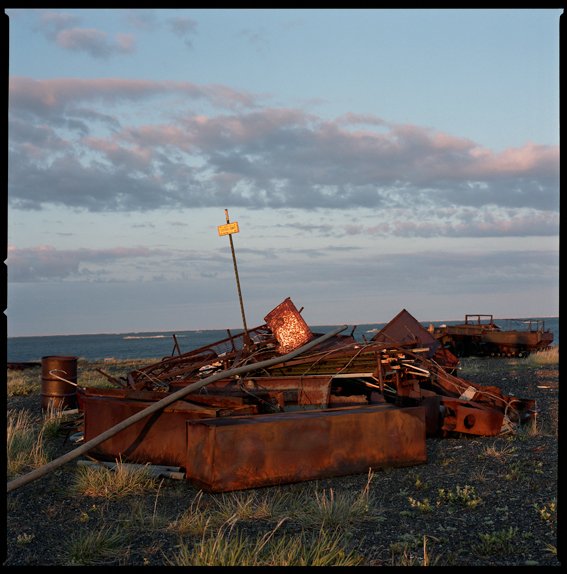

In the late 1950s, the US Atomic Energy Commission initiated a plan called “Operation Plowshare”, which sought to find peaceful uses for nuclear explosives. Project Chariot was intended as a demonstration of this technology, and proposed creating a harbor in northern Alaska. The plan was to detonate nuclear explosives equivalent to 160 Hiroshima bombs underground in Ogotoruk Valley at Cape Thompson, about 30 miles southeast of the village of Point Hope. The project was abandoned in 1962, due to extensive opposition from local residents, scientists working on preliminary studies, and eventually the larger environmental movement.
Early in the campaign to promote the project, Edward Teller and other proponents tried to drum up support for the harbor as an important economic development. However, the harbor project was never economically viable in its own right, with no practical use ever proposed. The leaders of Project Chariot believed that if they carried out a successful project on US soil, they would be more likely to gain approval for some of their other goals, such as using nuclear bombs to improve the Panama Canal. The remote location of Ogotoruk Valley was likely one of the primary reasons it was chosen.
Local residents in Point Hope and surrounding communities were not immediately informed about the project, but became fierce opponents as soon as they knew of the plan. The Ogotoruk Creek area is used seasonally for caribou hunting and other subsistence activities. Contamination there and in the ocean was a major concern. The Atomic Energy Commission planned to relocate several villages for a year or so after the blasts, and then place the villagers in a new settlement next to the harbor.
Environmental studies showed that Eskimos already consumed an unusually high amount of the radioactive isotope strontium 90. Radioactive fallout from worldwide nuclear detonations ended up in dust, which concentrated in the rootless lichens, was further concentrated by the caribou eating the lichen, and concentrated still further by people eating the caribou.
The project was never carried out, but radioactive material was brought in to the valley as part of some of the project studies. Decades later, the contaminated soil was dug up and removed.
Project Chariot is often seen as a dramatic example of the problems that can arise when distant industry or government plans development in remote places. The people leading Project Plowshare saw great benefits from moving forward, but local people would have seen few of those benefits, especially if the promised economic activity had failed to materialize.

Despite evidence to the contrary, some in Point Hope fear that nuclear bombs were transported and buried at the site.
Further Reading
Created: Jan. 19, 2018